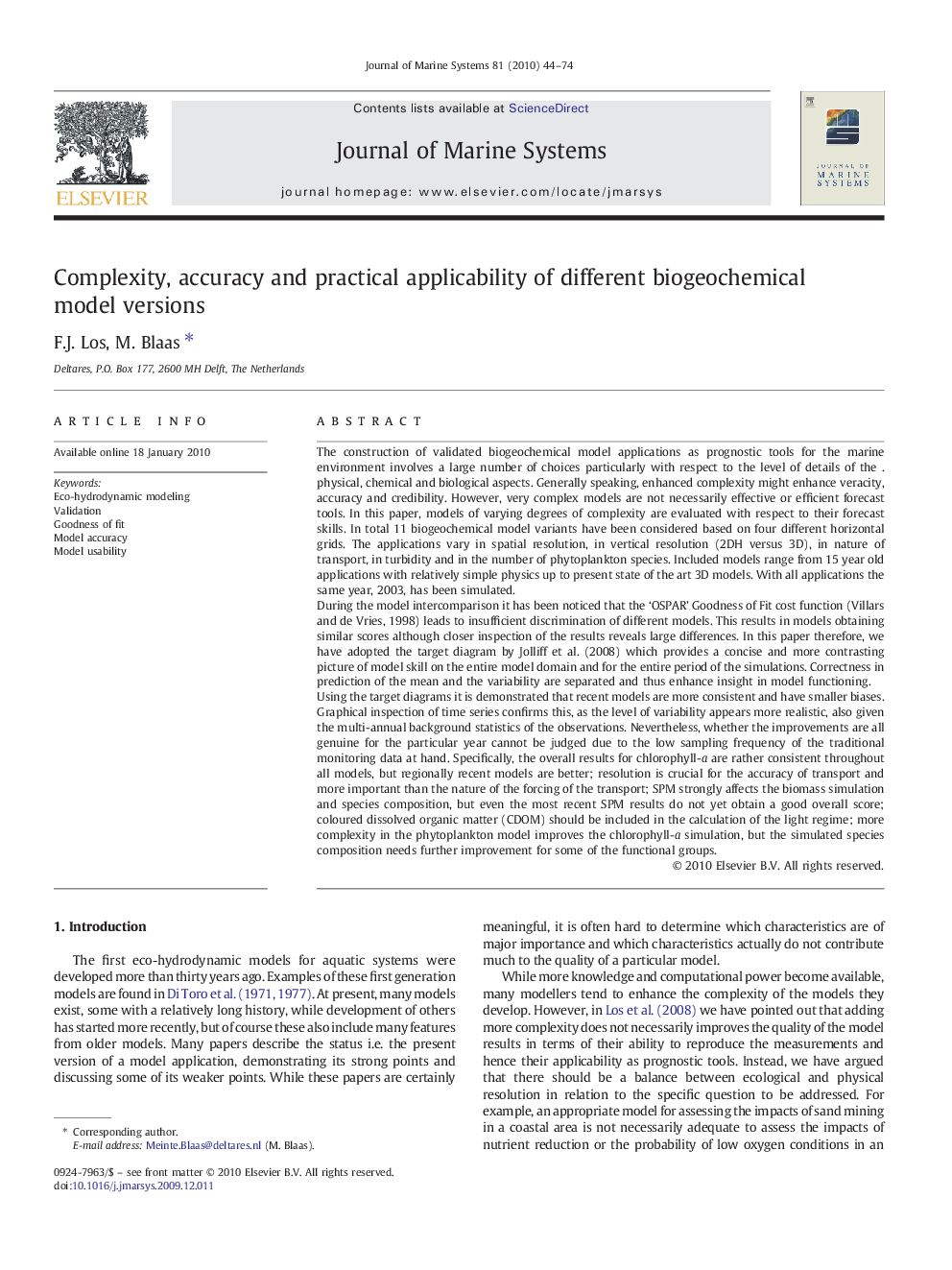| کد مقاله | کد نشریه | سال انتشار | مقاله انگلیسی | نسخه تمام متن |
|---|---|---|---|---|
| 4548580 | 1627333 | 2010 | 31 صفحه PDF | دانلود رایگان |

The construction of validated biogeochemical model applications as prognostic tools for the marine environment involves a large number of choices particularly with respect to the level of details of the .physical, chemical and biological aspects. Generally speaking, enhanced complexity might enhance veracity, accuracy and credibility. However, very complex models are not necessarily effective or efficient forecast tools. In this paper, models of varying degrees of complexity are evaluated with respect to their forecast skills. In total 11 biogeochemical model variants have been considered based on four different horizontal grids. The applications vary in spatial resolution, in vertical resolution (2DH versus 3D), in nature of transport, in turbidity and in the number of phytoplankton species. Included models range from 15 year old applications with relatively simple physics up to present state of the art 3D models. With all applications the same year, 2003, has been simulated.During the model intercomparison it has been noticed that the ‘OSPAR’ Goodness of Fit cost function (Villars and de Vries, 1998) leads to insufficient discrimination of different models. This results in models obtaining similar scores although closer inspection of the results reveals large differences. In this paper therefore, we have adopted the target diagram by Jolliff et al. (2008) which provides a concise and more contrasting picture of model skill on the entire model domain and for the entire period of the simulations. Correctness in prediction of the mean and the variability are separated and thus enhance insight in model functioning.Using the target diagrams it is demonstrated that recent models are more consistent and have smaller biases. Graphical inspection of time series confirms this, as the level of variability appears more realistic, also given the multi-annual background statistics of the observations. Nevertheless, whether the improvements are all genuine for the particular year cannot be judged due to the low sampling frequency of the traditional monitoring data at hand. Specifically, the overall results for chlorophyll-a are rather consistent throughout all models, but regionally recent models are better; resolution is crucial for the accuracy of transport and more important than the nature of the forcing of the transport; SPM strongly affects the biomass simulation and species composition, but even the most recent SPM results do not yet obtain a good overall score; coloured dissolved organic matter (CDOM) should be included in the calculation of the light regime; more complexity in the phytoplankton model improves the chlorophyll-a simulation, but the simulated species composition needs further improvement for some of the functional groups.
Journal: Journal of Marine Systems - Volume 81, Issues 1–2, April 2010, Pages 44–74